Oriel Launch Content Protection Solution To Help Publishers With Ad Blocking Threat
by Rebecca Muir on 26th Jan 2016 in News
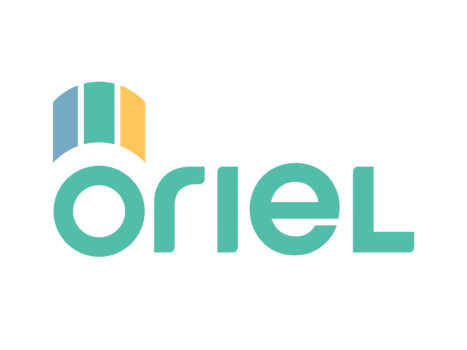
Today, (26 January) Oriel Ventures announces the public launch of its content protection technology that renders desktop, mobile, and even ISP ad-blocking ineffective. The SaaS platform that enables publishers to re-engage their ad-blocking audiences has, in private pre-launch trials, resulted in up to 40% of ad-blocking users opting to view ads in exchange for access to content.
I first met with Aidan Joyce, CEO and co-founder at Oriel (pictured below) last year when private trials of Oriel's technology had just begun. Joyce showed me the technology and I was so impressed that I recommended that ExchangeWire test it (results from our test will be revealed at a later date).

I caught up again with Joyce yesterday ahead of today's announcement to dig into the pre-trial results in more detail.
ExchangeWire: Results from Oriel’s pre-launch trials showed 40% of ad-blocker users opting to whitelist or disable their ad-blocker in exchange for access to ad-supported content: did you see any variations in that trend across different demographics or content verticals?
Aidan Joyce: There are most certainly differences across verticals. We have worked with publishers in the most impacted verticals: gaming, news, and technology and we've already seen up to 40% of ad blockers opting to whitelist or disable [in gaming]. In technology, this is more like 30-33%, which is still a significant number of people.
The 'success' is also dependent on the message that the publisher uses, humour and respect work well! And there is a need to display localised messages..
I should also make it clear, and without knocking individual publishers, that not all content is made equal. If a site has gained popularity and, for example, if users have established accounts on those sites and regularly visit, then you will see the best levels of re-engagement through whitelisting.
Some publishers in your pre-launch trials have taken a similar approach to Forbes, i.e. they ask ad blocking users to disable their ad blocker. Then, if they have not disabled their ad blocker, they present messaging to the user that the publication (content) is ad-funded and serve ads as normal. Do you agree with this approach?
What we’re finding is that users who install ad blockers are not all bad; but that there is a hardcore group who quite simply do not want ads, period.
Messaging that stated up front, for example, "Please consider whitelisting us – We are supported by advertising. We don't serve popups, flash adverts or annoying auto-play videos, just some reasonable ads from our sponsors" worked well.
What we would recommend to a publisher is to provide a message to ad-blocking users that if they wish to continue, there will be ads on the site. To deliver ads, responsibly present to them that we’re using content delivery protection and ads will be shown to you if you chose to proceed.
A number of pre-launch trials do not show messaging, they present the advertising as it was, what we have noticed in that situation is that there is not much feedback (see below). Interestingly, we have seen conversations take place in forums stating that the ad blockers are not working.
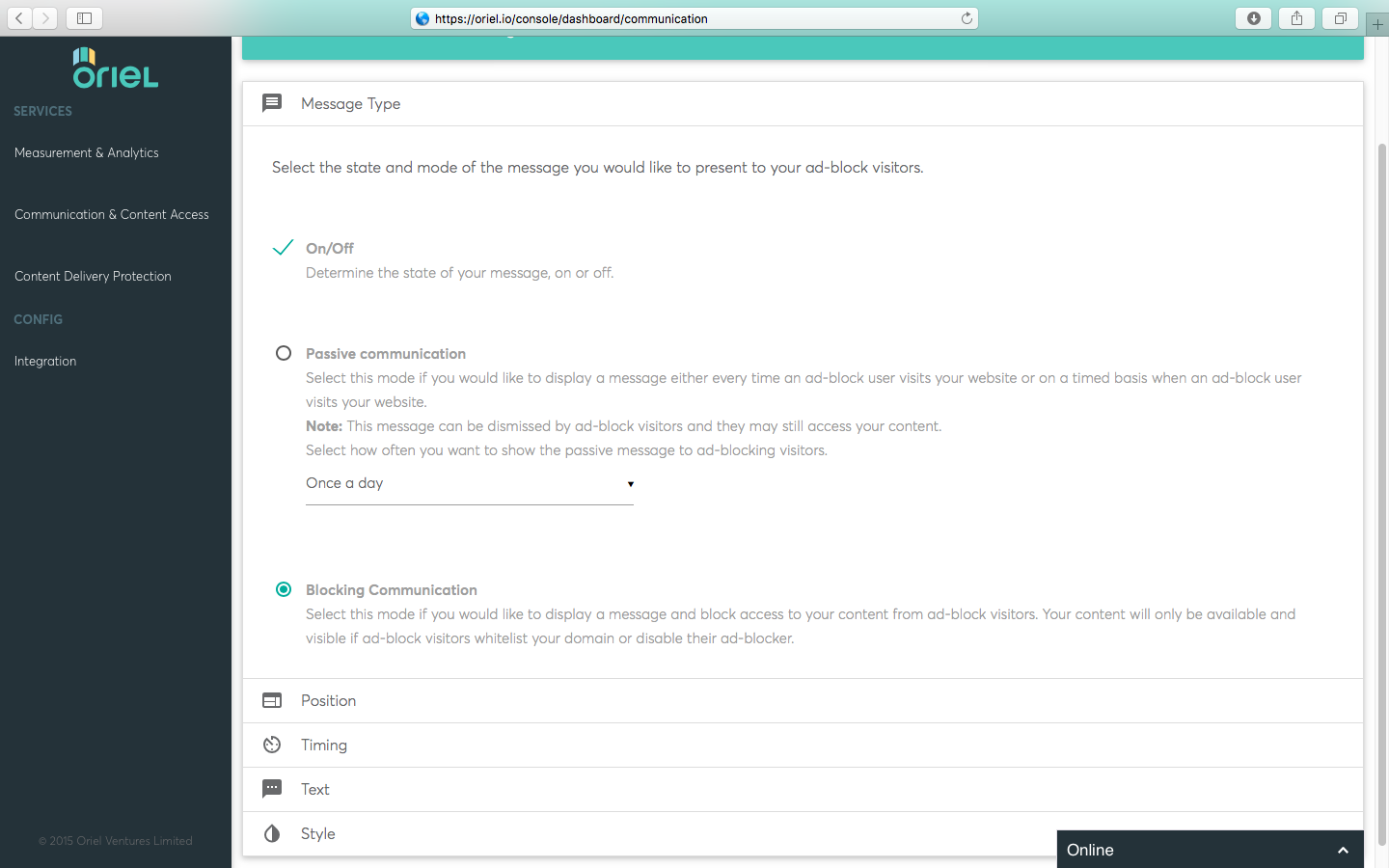
Joyce also shared with me screenshots from the platform. Below you can see a publisher who has been running for a full month with "content access control" i.e. letting users with ad-blockers know they are required to whitelist the site, or turn off their ad-blocker to access content. Joyce said: "While the numbers do dip up and down. the average percentage of ad-blockers re-engaged for one month is just shy of 40%, and what you are looking at here is a gaming sector site."
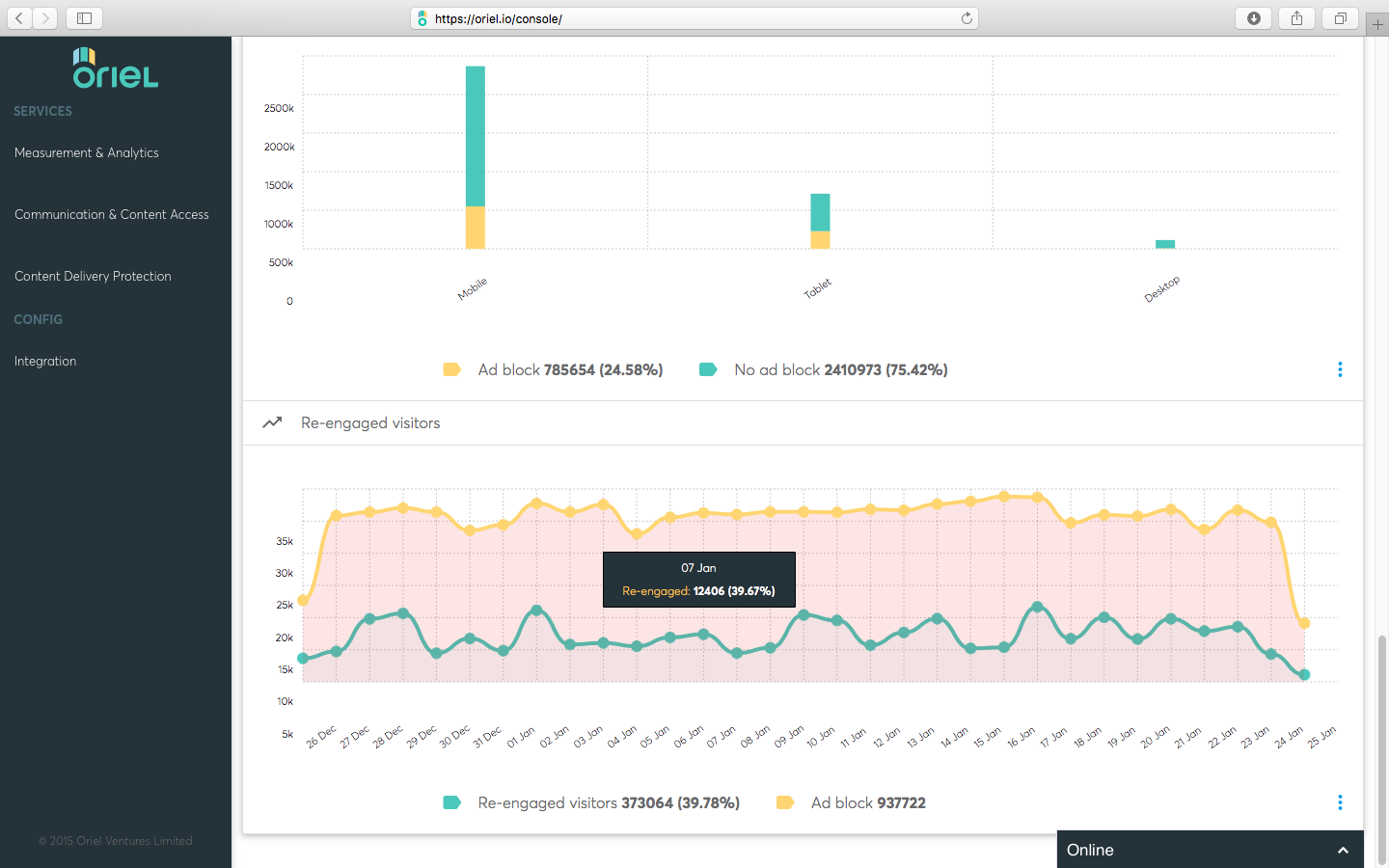 Source: Oriel
Source: Oriel
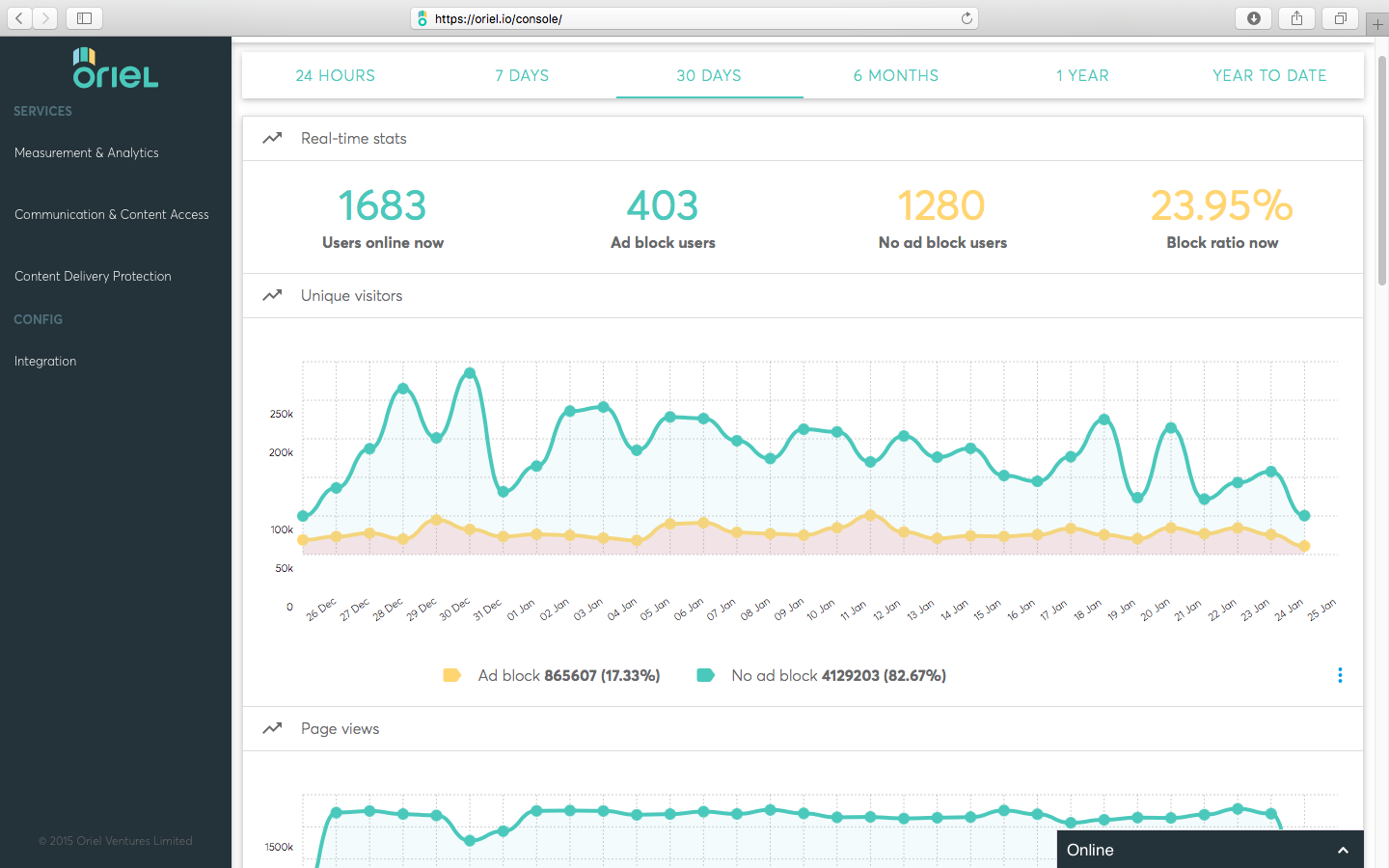
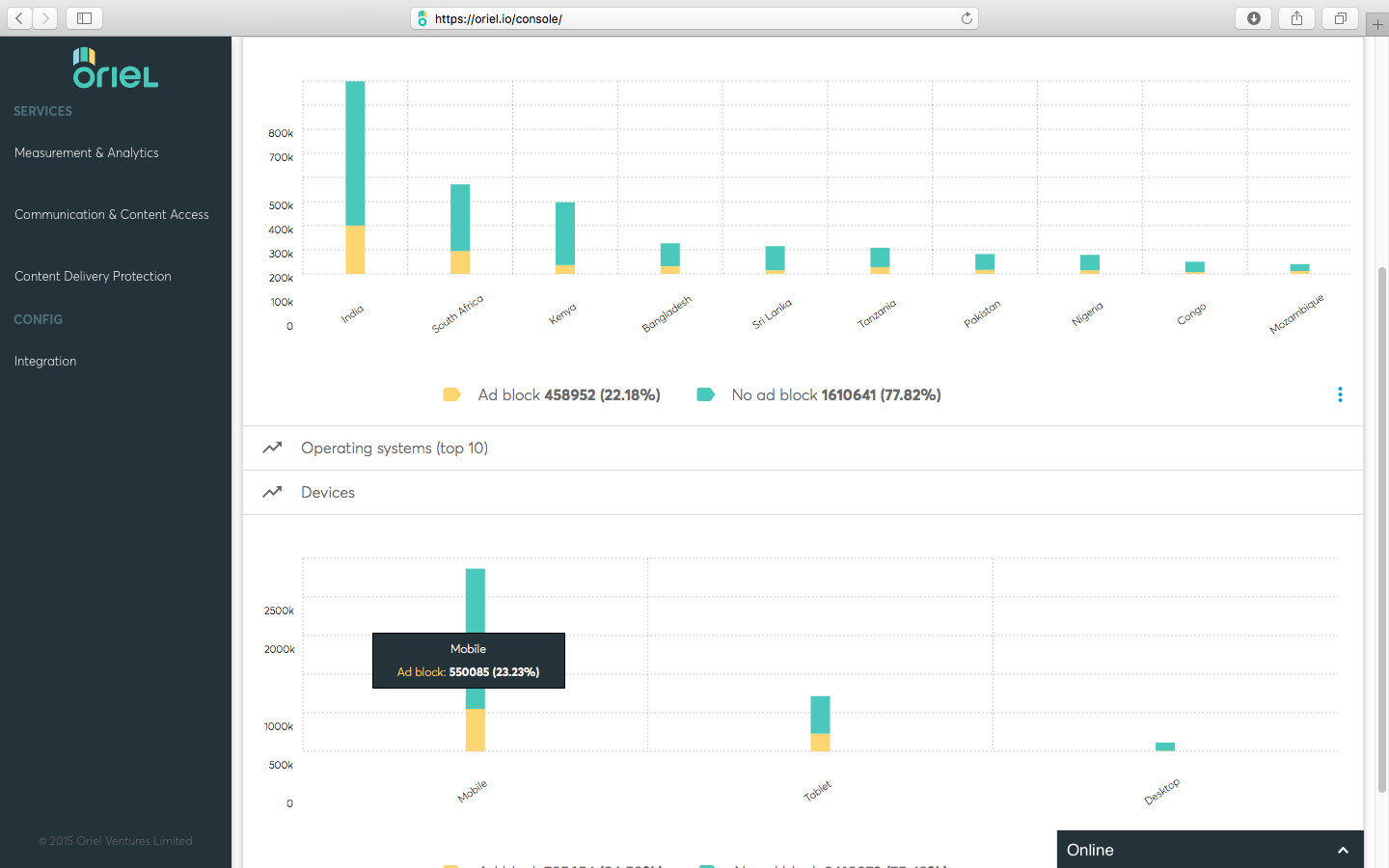
In an official statement, Joyce, CEO and co-founder, Oriel, said: “Ad-blocking has rapidly evolved as a consumer response to poor practice in advertising, and the tools we offer today provide immediate results for publishers to render ad-blocking ineffective. Our goal is to expand our content protection delivery platform to encapsulate more user-centric needs by fixing what’s wrong with advertising, namely speed of delivery, ad-choice, privacy concerns and safety for users.”
To learn more or to set up a software trial, visit: https://oriel.io/
Ad BlockingDisplayMonetisation








Follow ExchangeWire